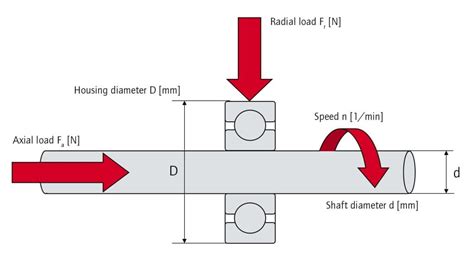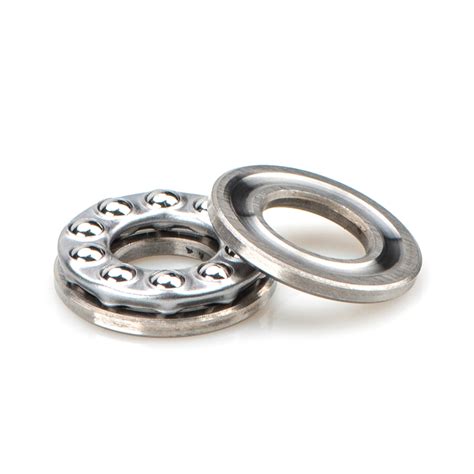Axial Bearing: The Unsung Hero of Modern Machinery
Axial bearings are unsung heroes in the world of machinery. They may not be as flashy as their radial counterparts, but they play a vital role in ensuring the smooth and efficient operation of countless machines and devices. This comprehensive guide will delve into the world of axial bearings, exploring their types, applications, benefits, and best practices. Get ready to unravel the secrets of these silent performers!
Understanding Axial Bearings
Axial bearings, unlike radial bearings, are designed to withstand thrust loads, which are forces acting parallel to the shaft axis. They are commonly used in applications such as pumps, compressors, and gearboxes. These bearings are also crucial in vertical shafts and rotary tables, where they prevent axial movement while allowing free rotation.
Types of Axial Bearings
Axial bearings come in various types, each with its unique characteristics and applications:

-
Ball thrust bearings: These bearings utilize ball elements between hardened steel races. They are compact, can handle high speeds, and are suitable for moderate thrust loads.
-
Roller thrust bearings: Similar to ball thrust bearings, these bearings use rollers instead of balls. They offer higher load capacities but are generally bulkier and have lower speed limits.
-
Tapered roller thrust bearings: These bearings employ tapered rollers arranged in a conical shape. They can withstand heavy thrust loads and are often used in heavy-duty applications like wind turbines and rolling mills.
-
Hydrostatic thrust bearings: These bearings use a thin film of pressurized fluid to support the load. They offer extremely low friction and are ideal for high-speed, high-load applications such as gas turbines and compressors.
Applications of Axial Bearings
Axial bearings find widespread applications across various industries:

-
Aerospace: Thrust bearings are essential in aircraft engines, providing support and reducing friction on rotating shafts.
-
Power generation: These bearings are used in turbines and generators to handle thrust loads and ensure smooth operation.
-
Construction: Axial bearings are employed in cranes and excavators to handle heavy loads and prevent axial movement.
-
Automotive: Thrust bearings are found in transmissions and differentials, allowing for smooth gear engagement and power transfer.
-
Medical equipment: Precision axial bearings are used in medical devices like MRI scanners and surgical robots, ensuring precise and reliable operation.
Benefits of Axial Bearings
Axial bearings offer numerous benefits that contribute to the overall performance of machinery:
-
High load capacity: Axial bearings are designed to withstand significant thrust loads, making them suitable for demanding applications.
-
Reduced friction: Advanced bearing designs minimize friction, leading to increased efficiency and reduced energy consumption.
-
Compact size: Some axial bearings, such as ball thrust bearings, have a compact design, saving valuable space in machinery.
-
Low maintenance: Axial bearings often require minimal maintenance, reducing downtime and operating costs.
-
Long service life: Properly designed and maintained axial bearings can operate for extended periods, ensuring reliability and reducing replacement costs.
Best Practices for Axial Bearing Selection and Use
To ensure optimal performance and longevity of axial bearings, follow these best practices:

-
Proper load calculation: Accurately determine the expected thrust loads to select the appropriate bearing size and type.
-
Lubrication: Axial bearings require proper lubrication to minimize friction and wear. Consult the manufacturer's recommendations for the most suitable lubricant.
-
Alignment: Misalignment can shorten bearing life. Ensure proper alignment of the bearing with the shaft and housing.
-
Mounting and handling: Follow the manufacturer's instructions for proper bearing mounting and handling to prevent damage.
-
Inspection and maintenance: Regularly inspect axial bearings for signs of wear or damage. Replace bearings as per the manufacturer's guidelines or when necessary.
Troubleshooting Axial Bearing Issues
Like any mechanical component, axial bearings can experience issues. Here are some common problems and their solutions:
-
Excessive noise: Noise can indicate misalignment, lack of lubrication, or bearing damage. Inspect the bearing, check alignment, and lubricate if necessary.
-
Vibration: Vibration can be caused by unbalance, misalignment, or worn bearings. Check the bearing, shaft, and housing for any issues.
-
Overheating: Overheating can occur due to excessive friction, lack of lubrication, or misalignment. Inspect the bearing, ensure proper lubrication, and correct alignment.
-
Premature failure: Premature failure can be caused by overloading, improper mounting, or contamination. Address the root cause to prevent further failures.
-
Wear: Wear is inevitable but can be minimized by proper lubrication, alignment, and load management. Inspect bearings regularly and replace when necessary.
3 Humorous Stories and Lessons
To illustrate the importance of axial bearings in a light-hearted way, here are three humorous stories:
-
The Cranky Compressor: A compressor complained of excessive noise and vibration. The technician discovered a worn axial bearing, causing the shaft to wobble. Replacing the bearing silenced the cranky compressor, restoring peace to the factory.
-
The Rollercoaster Roller: A roller coaster experienced a sudden stop mid-ride, leaving passengers hanging. Inspection revealed a failed axial bearing in the main drive system. The bearing was replaced, and the rollercoaster resumed its thrilling operation, much to the delight of the passengers.
-
The Wobbling Wind Turbine: A wind turbine began to wobble uncontrollably. The technician found loose axial bearings in the gearbox. Tightening the bearings stabilized the turbine, allowing it to generate clean energy without interruption.
These stories emphasize the critical role of axial bearings in ensuring the smooth and safe operation of machinery.
Effective Strategies for Axial Bearing Maintenance
Proactive maintenance strategies can significantly extend the life of axial bearings:

-
Regular inspections: Schedule regular inspections to visually examine bearings for signs of wear, damage, or misalignment.
-
Vibration monitoring: Install vibration sensors to detect imbalances, misalignment, or bearing damage early on.
-
Lubrication management: Follow the manufacturer's lubrication recommendations and use the appropriate lubricant for the specific bearing type and application.
-
Training: Train maintenance personnel on proper bearing handling, installation, and maintenance techniques.
-
Predictive maintenance: Implement predictive maintenance technologies, such as oil analysis and ultrasonic testing, to identify potential bearing problems before they escalate.
Tips and Tricks for Optimal Axial Bearing Performance
Follow these tips and tricks for optimal axial bearing performance:
-
Use high-quality bearings: Invest in high-quality axial bearings from reputable manufacturers to ensure reliability and durability.
-
Proper mounting: Carefully follow the manufacturer's instructions for mounting bearings to prevent misalignment and damage.
-
Adequate lubrication: Ensure proper lubrication of bearings to minimize friction and wear. Avoid over-lubrication, which can lead to contamination.
-
Alignment checks: Regularly check the alignment of bearings with the shaft and housing to prevent premature failure.
-
Environmental factors: Consider environmental factors such as temperature, humidity, and contamination when selecting and maintaining axial bearings.
How to Approach Axial Bearing Maintenance Step-by-Step
Follow these steps for effective axial bearing maintenance:
-
Plan: Determine the maintenance schedule, resources required, and safety precautions.
-
Inspect: Visually inspect bearings for wear, damage, or misalignment. Check lubrication levels and condition.
-
Disassemble: Carefully disassemble the bearing housing and remove the bearing.
-
Clean: Clean the bearing components thoroughly using appropriate solvents or cleaning agents.
-
Inspect further: Inspect the bearing components for any signs of damage or wear. Use measuring tools to check dimensions and clearances.
-
Lubricate: Apply the appropriate lubricant to the bearing components.
-
Reassemble: Reassemble the bearing and housing, ensuring proper alignment and torque values.
-
Test: Test the bearing operation by manually rotating the shaft or using a test rig. Check for smooth operation and any abnormal noises or vibrations.
-
Document: Record all maintenance activities, including inspection findings, replacements, and lubrication.
Tables for Reference
Axial Bearing Types and Characteristics
| Bearing Type |
Load Capacity |
Speed Limit |
Compactness |
Maintenance |
| Ball thrust bearing |
Moderate |
High |
Compact |
Low |
| Roller thrust bearing |
High |
Moderate |
Bulky |
Moderate |
| Tapered roller thrust bearing |
Very high |
Low |
Bulky |
High |
| Hydrostatic thrust bearing |
Extremely low |
Very high |
Bulky |
Minimal |
Axial Bearing Applications
| Industry |
Application |
Load Type |
| Aerospace |
Aircraft engines |
Thrust |
| Power generation |
Turbines and generators |
Thrust |
| Construction |
Cranes and excavators |
Thrust |
| Automotive |
Transmissions and differentials |
Thrust |
| Medical equipment |
MRI scanners and surgical robots |
Precision |
Axial Bearing Maintenance Schedule
| Maintenance Activity |
Frequency |
| Visual inspection |
Weekly |
| Vibration monitoring |
Monthly |
| Lubrication inspection |
Every 6 months |
| Predictive maintenance |
Annually |
| Overhaul |
As per manufacturer's recommendations |

